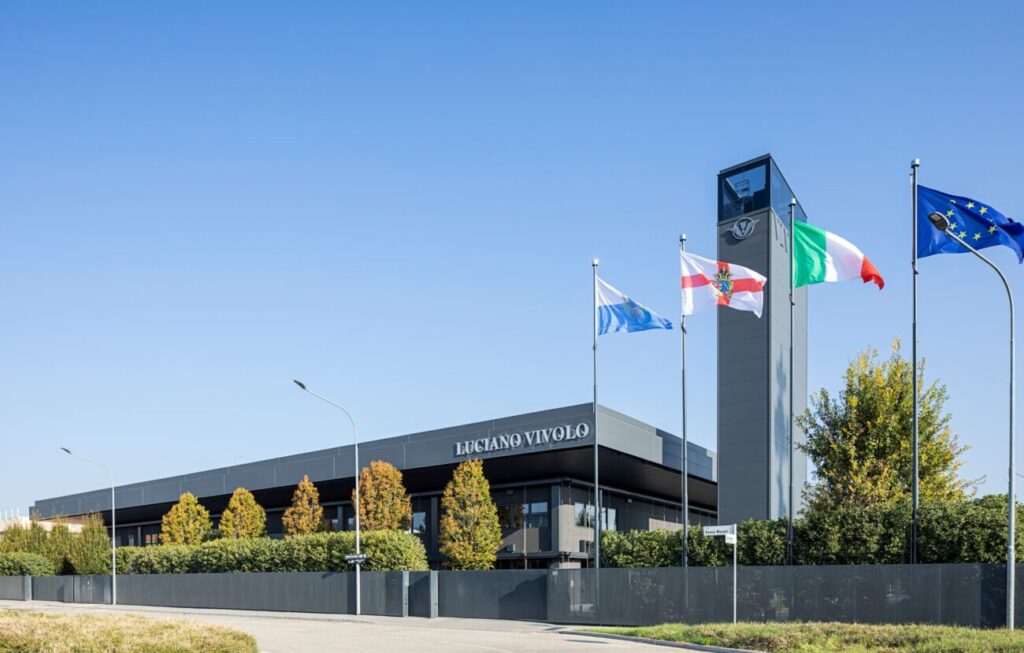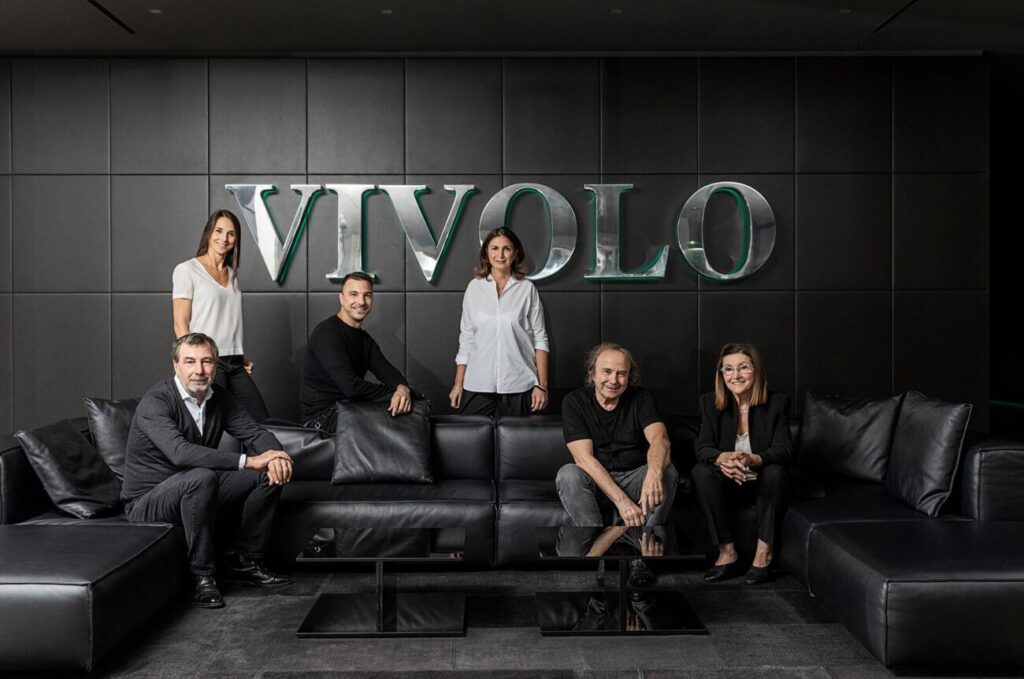The finer details
“Born from an intuition to recover waste” is how the daughter of Luciano Vivolo, founder of leather trims and patches company Vivolo, describes the Bologna-based company. |
In the 1970s, Mr Vivolo and his wife Marianna saw an opportunity to transform leftover leather from local bag and shoemakers into elbow patches, considered a fashion item at the timeThe company supplied to local companies but a shrewd decision to send samples to newspaper Corriere della Sera in 1980 proved a turning point for the family run firm: a week later, an order was placed for 2 million patches. Leather elbow patches became jeans patches, and the business grew, adding leather trims and accessories for the fashion market. In 2000, the couple’s children joined them in the management team, allowing them to focus on export markets, and by 2010, the company was selling in 42 countries and counted some of the biggest fashion brands among its clients. The opening of a newly built headquarters in San Lazzaro di Savena last year marked another turning point for the company. The sustainability strategy is built into the fabric of the 10,000 square-metre facility, with floor-to-ceiling windows surrounded by beech trees, giving a feeling of being at one with the environment. High-performance thermal systems minimise energy loss and large green courtyard areas absorb carbon dioxide. Underground cisterns collect rainwater for reuse in production and last year the photovoltaic panels on the roof contributed 110,000 kWh towards the company’s energy needs. The building houses more than 100 machines, enabling the 150 workers to produce eight million items per year, and the facility includes a laundry department that can create vintage looks through various washes and dye techniques. As well as its core business of jeans labels and patches, it manufactures straps, covered buttons, zip pulls for shoes, key rings, purses, wallets and handles for customers including Hermès, Versace, Valentino, Loewe and Armani. The company has recently invested almost €1 million to expand its leathergoods and footwear workspace by 200

All credits: Vivolo

LUCIANA VIVOLO
square-metres, with extra machinery and more staff to offer semi-finished shoes and bags.
“At the core of our business is environmental ethics, it is a vision that encompasses all stages of processing,” Luciana Vivolo, chief product officer at Vivolo, tells World Leather. “Customers really appreciate that. There is an expression that best defines us and which we recently chose for our new logo: Beyond the Product.”
Material gains
These environmental ethics are reinforced by its choice of leather. Vivolo works with an exclusive network of Italian tanneries. “This allows us to source raw materials that are guaranteed and excellent, as well as enabling us to study new and exclusive processing techniques, which allow us to propose unique solutions to our customers,” explains Ms Vivolo. “The market has always recognised our quality and our ability to be very flexible.” Articles are available in full grain, suede and exotic leathers, as well as fabric options such as banana and pineapple- derived materials. For its denim clients, which include 7 For All Mankind and Citizens of Humanity, the priority is to create labels and details that enhance brand identity, says Ms Vivolo. She noted this year’s most popular materials include nubuck and crust leather, as well as leathers with different textures that allow for embroidery, metal adornments and customisation. “We expect an increasingly customised direction in this sector, with the consumer at the centre of a shopping experience and where choosing a denim garment, from the fabric to the details, is an expression of identity.”The latest collection, for spring-summer 2025, includes variations on its hot-printed or digitally printed leather labels for denim and trousers, lace finials and 3D printing, recycled and natural materials. Recycled leather is another option, however, this is aimed at smaller collections, says Ms Vivolo. “We create projects with very small production runs, limited editions that tell a story and have specific purposes in terms of both target and message. They are not productions aimed at the mass market, where the quantities and quality standards do not allow us to work with waste materials, which have a very high intrinsic value, but cannot ensure a consistent output,” she explains. The company is keen to promote leather’s circular qualities and that tanneries use a waste product from the food industry. The message is reinforced through a project with local schools, where the children learn about giving new life to waste materials, “raising awareness of reuse and recycling among the new generations”. The family also sponsors a competition at art school Accademia di Belle Arti di Bologna, the Luciano Vivolo Prize, which is now in its second season. Students are invited into the company to learn about the business and then challenged to design patches, labels, buckles and pullers. “We believe in the next generation of designers.” Brand customers are also invited to the facility to find inspiration in its showroom and archives, which contain 20,000 samples and 200,000 square-metres of leather. “When customers visit our company, we try to give them an experience that is out of the ordinary,” says Ms Vivolo. “We are a company with a strong ecological identity, combining know- how with technological innovations, always remembering that we are born from Luciano’s magical intuition to recover waste materials.”